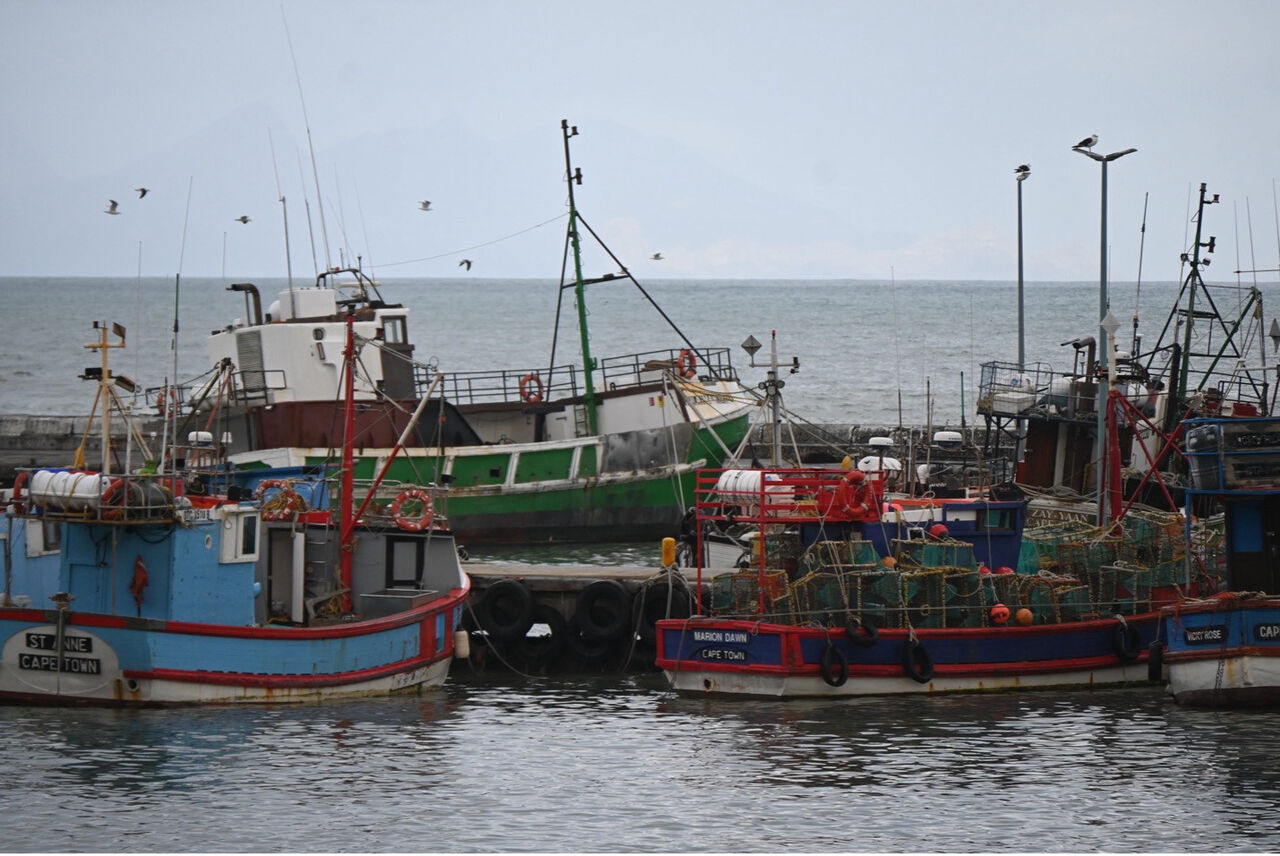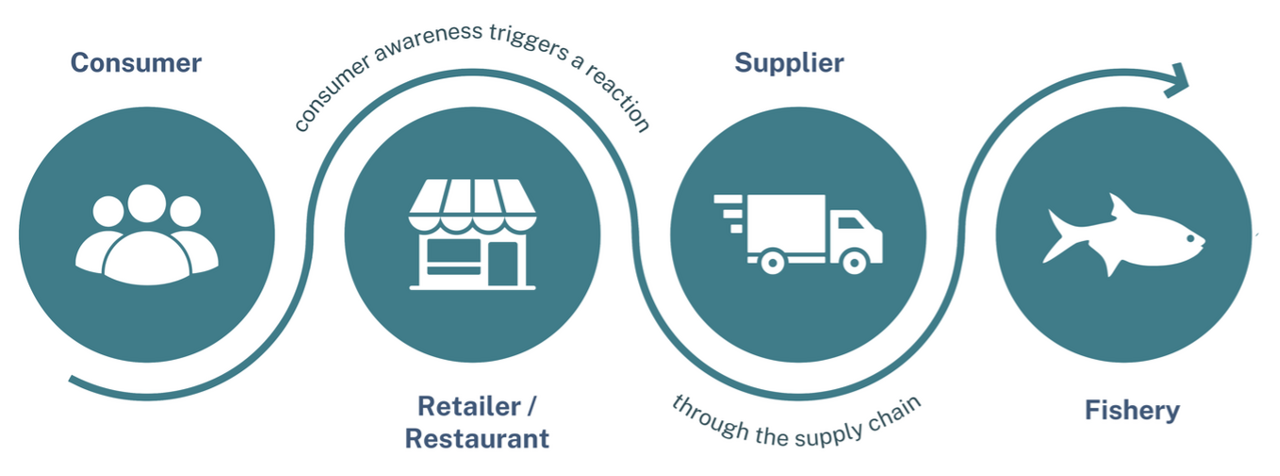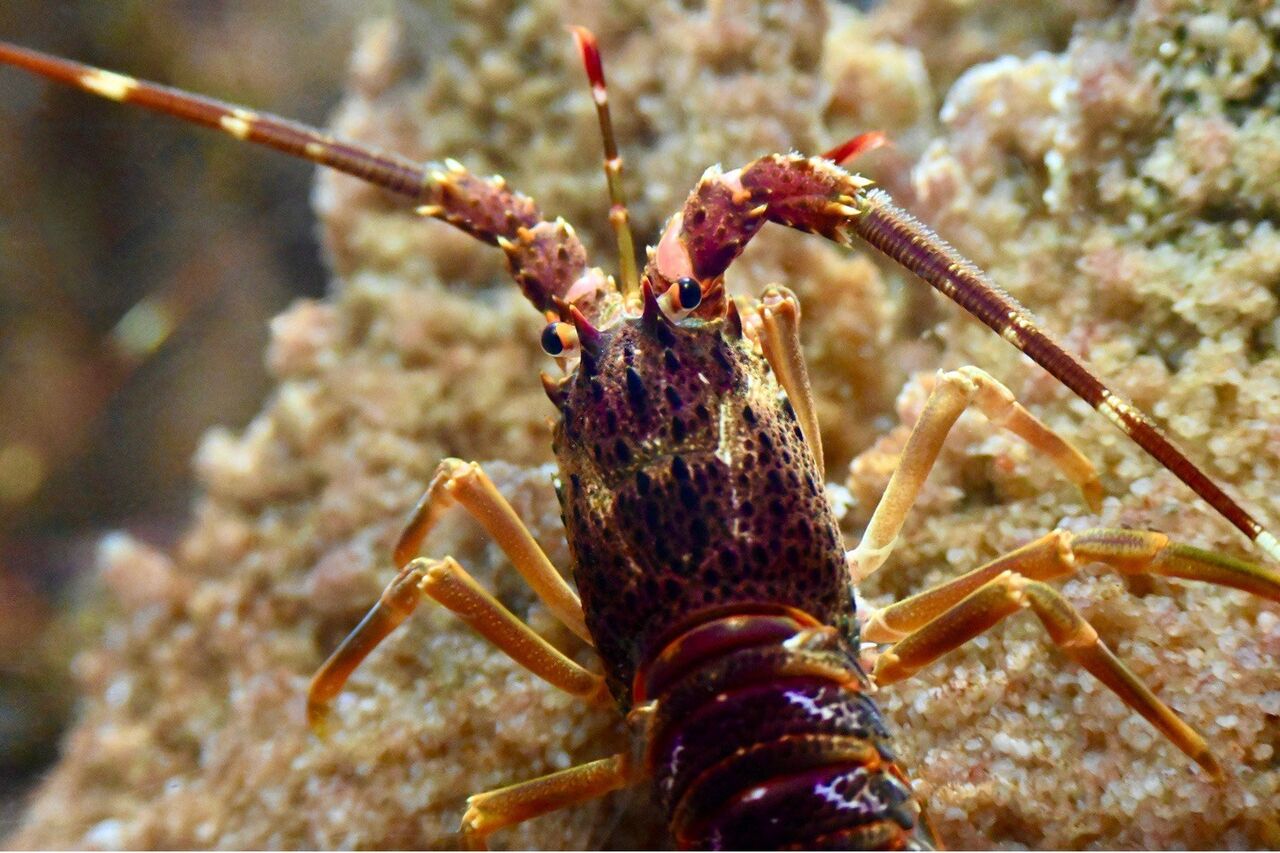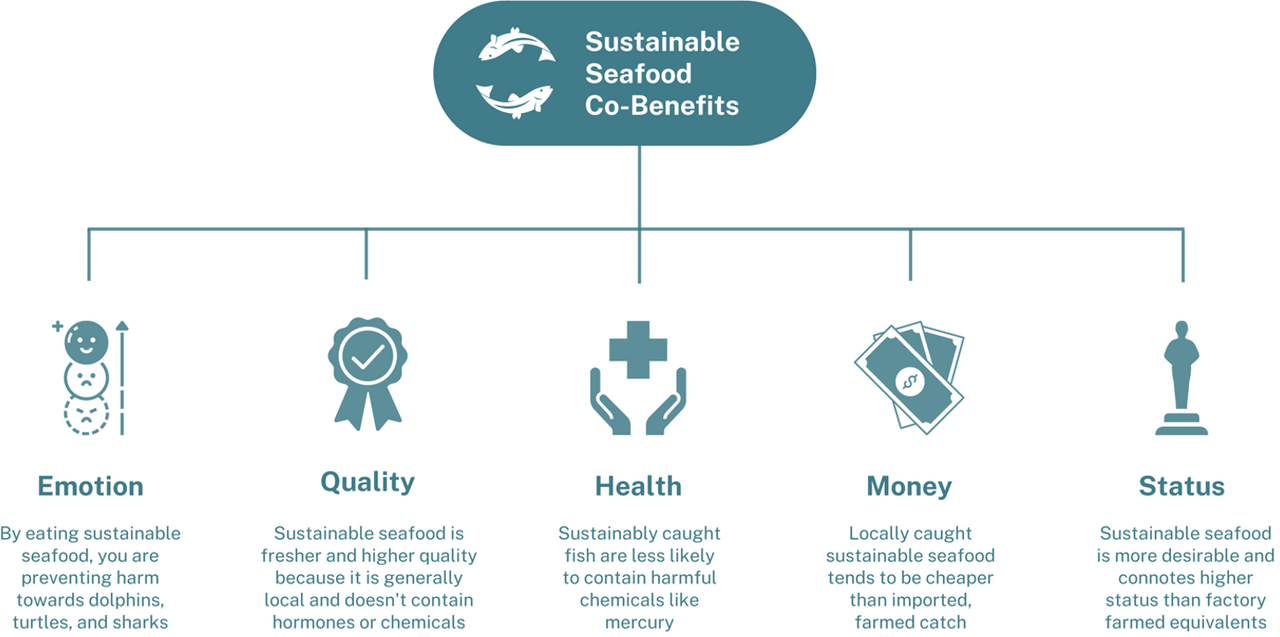From ocean to plate: Driving sustainable seafood on the V&A Waterfront

Located on the edge of the Atlantic Ocean, the V&A Waterfront in Cape Town is the most frequented destination on the African continent, drawing over 24 million visitors each year. Amidst the bustle of swanky restaurants, shops, hotels, and galleries, the Waterfront also serves as a key hub for the fishing industry, with a buzzing harbour and a great many seafood joints.
Seafood is indispensable to the Western Cape. It serves as a major economic driver in the region, with the fishing industry employing over 50,000 people and contributing billions of rands to the economy each year. However, our current seafood consumption habits are depleting global fish stocks and harming ocean ecosystems.
South Africa consumes approximately 312 million kilograms of seafood annually, of which 50% is locally caught. Almost 80% of South African line fish species are considered overexploited, while consumer demand for familiar menu items exacerbates the matter. More fish are now being caught than populations can replace through natural reproduction due to overfishing, while industrial methods such as bottom trawling and drift net fisheries are destroying delicate marine habitats like coral reefs and seagrass.
Today, 80% of the world’s fisheries are already fully exploited, overexploited, depleted, or in a state of collapse. Moreover, 40% of the world’s catch is bycatch – the unintended capture of non-target species – and approximately 650,000 whales, dolphins, and seals are killed annually in nets.
As the demand for seafood grows globally, the onus falls on all of us – consumers, retailers, suppliers, and fisheries – to help shift seafood consumption patterns towards sustainability. Last summer, I was part of a team of student researchers working on V&A Waterfront’s initiative to drive sustainable seafood in collaboration with the Two Oceans Aquarium. We investigated how to ‘nudge’ V&A consumers and restaurants towards sustainable seafood choices, focusing on demand-side analysis – retailers and consumers – to see how consumer awareness might trigger a reaction through the entire supply chain.
Moreover, our interviews with V&A seafood retailers revealed their belief that consumer-driven change is necessary for them to make more sustainable choices. It is thus vital that consumers are educated about sustainable seafood.

Are you a seafood consumer in South Africa? Here's how you can help turn the tide:
- Look for MSC/ASC certifications on the menu. While these ratings are imperfect – they can be burdensome to small fisheries and, in some cases, analogous to greenwashing – they still represent the best-standardised measure of seafood sustainability.
- Ask waitstaff. If MSC/ASC certifications aren’t available on the menu, ask the waitstaff for more information about the seafood items on offer, specifically: What species is it? How was it caught or farmed? Where is it from?
- Check the SASSI app or list. Armed with the above information, check the SASSI app or online list to identify the seafood item’s sustainability status. SASSI is a consumer awareness campaign that was created to simplify all the complicated information in the seafood industry into three easily understandable categories. Seafood available on the South African market is given one of three colours: red – don’t buy; orange – think twice; green – best choice. So, if you were reading a menu and came across “West Coast Rock Lobster Risotto,” you could check the SASSI app to discover that the West Coast rock lobster (Jasus lalandii) is a highly endangered, red-listed species and should thus be avoided. Return to the menu and find a green-listed item!
This infographic summarises the above three steps into a handy guide, which you can download and share to educate others in your community about sustainable seafood:

Are you a seafood retailer or restaurant in South Africa?
There is much that you can do to help conserve our oceans and also to cater to customers who are increasingly seeking a more ethical and sustainable dining experience. The economic case cannot be overstated. A 2021 report from EY showed that 84% of consumers considered sustainability important when making purchase decisions, and in 2022, a report by IBM showed that 49% of consumers paid a premium for products branded as sustainable. Moreover, according to the World Economic Forum, in 2023, at least 65% of consumers sought access to sustainable food options, while a 2020 survey by the Marine Stewardship Council found that 56% of global seafood consumers are willing to pay more for seafood from a certified sustainable fishery. Thus, embracing sustainability is not just an ethical choice but also a fiscally prudent one.
Furthermore, our V&A consumer analysis survey, which received over 1,300 responses, revealed that 93.3% of respondents would consider sustainable seafood options if indicated on the menu. Additionally, 62.9% of respondents expressed willingness to choose a sustainable option over a wild counterpart.
The survey also revealed that 48.6% of Waterfront diners are Gen Z or Millennials (ages 18-39), indicating their significant presence in the market. These findings align with the latest WWF-SASSI retailer report, which identifies Gen Z and Millennials as the future market drivers. Representing nearly half of the V&A’s consumer demographic, retailers would benefit from engaging this environmentally conscious market.
Finally, the survey showed that, among diners at the V&A, sustainability ranked higher than price as a consideration in making seafood choices. This suggests that prioritising sustainable seafood options can attract a loyal customer base willing to support ethical and eco-friendly practices.
However, despite recognising the importance of eating sustainably, many consumers do not consistently make sustainable choices. This gap can be bridged through small, strategic changes – what behavioural economists refer to as ‘nudges’ – that make sustainable options accessible, attractive, and aspirational. Here are five ways you can do this:
- Make sustainable seafood accessible. The way items are presented in a store, by waitstaff or on a menu, can significantly influence a customer’s decision-making. Our V&A consumer survey revealed well-informed staff, recognisable logos on menus, and comprehensive seafood labelling as the most effective ways to ‘nudge’ consumers towards sustainable seafood. Menus, in particular, serve as a key leverage point in the seafood value chain, holding both retailers and consumers accountable. Studies have shown that diners are more likely to choose sustainable food options when they are listed prominently at the top of the menu, made more visible, or given greater prominence relative to other choices. Our subconscious minds are swayed by availability and positioning; thus, by highlighting sustainable seafood dishes – for instance, by giving its SASSI rating or including the appropriate MSC/ASC certification label – you can encourage your patrons to make more responsible choices.
- Frame positive messages and highlight co-benefits. We are more receptive to positive messages that make us feel good about ourselves. When promoting sustainable seafood, emphasise the co-benefits of choosing these options, such as supporting local fisheries and safeguarding marine life. Messages based on pride, fun, and humour tend to be more compelling than those laden with guilt. Studies show that consumers are less likely to buy a product if they think its green benefit is the primary driver, and they are more likely to buy a product if the green benefit is seen as a fortuitous side effect. Thus, highlighting co-benefits benefits restaurants by attracting environmentally conscious customers and enhancing their reputation for sustainability. Here are some ways to do so:

- Present sustainable options as aspirational, delicious, and satisfying. The words we use to describe food can significantly impact how it is perceived by consumers. By crafting appetising and indulgent descriptions for your sustainable or plant-based dishes, you can make these options more desirable. Words like “spicy chickpea curry” or “pasta with creamy sauce” evoke the flavours and pleasures of a meal, removing any notion of sustainable choices being lacking in taste or substance.
- Introduce sustainable “meal deal” incentives. Promotional deals that encourage sustainable choices can go a long way in enticing customers to make responsible seafood decisions. Consider offering sustainable options as part of your daily specials or providing a free drink to diners who choose a sustainable or plant-based main course. However, be mindful of food waste by avoiding promotions that encourage excess consumption, such as offering a free side dish alongside a sustainable main course.
- Broaden messages to appeal to all. Inclusivity is key when promoting positive behaviours. Avoid using terms associated with narrow identities, such as “vegetarian” or “vegan,” as they may inadvertently make some individuals feel excluded. Instead, opt for more neutral descriptors, like “field-grown,” that celebrate the deliciousness and eco-friendliness of these dishes without labelling them. Similarly, rather than labelling a dish, “Vegetarian Fisherman’s Stew,” rebrand it as a “Hearty Coastal Stew” to emphasise its ocean-inspired ingredients and convey that it is filling.
The V&A Waterfront is uniquely positioned to lead sustainable seafood practices in South Africa. With its vibrant harbour and diverse consumer base, it can significantly influence seafood consumption patterns. Consumer demand drives change, and, as this article has shown, sustainability matters to diners, especially younger generations. By raising awareness and ‘nudging’ sustainable options, both consumers and retailers can make informed, responsible choices. It is now possible for us to create a seafood culture that is both ethical and economically sound.
Related News
Sign up to our Newsletter
Receive monthly news, online courses and conservation programmes.


